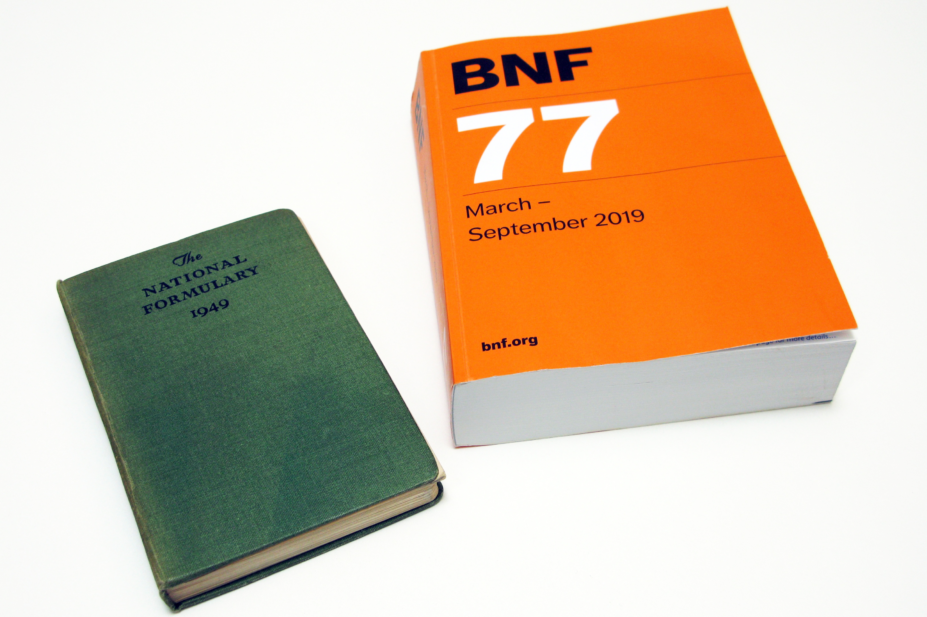
Royal Pharmaceutical Society Library
Visitors to the Royal Pharmaceutical Society library are always fascinated by our complete collection of the
British National Formulary
(
BNF
): especially when they compare the size and coverage of the modern editions to the first National Formulary, which was published 70 years ago.
It is also interesting to note some of the medicinal preparations included in the 1949 National Formulary that do not appear in today’s BNF, such as eye-drops and pastilles containing cocaine and opium linctus for infants.
But what prompted the creation of such an important reference book?
Following the 1911 National Health Insurance Act, a collection of local formularies were published, which were adapted to local needs. However, the onset of the Second World War created a problem — many drugs became difficult to obtain. As a result, in 1939, the government decided to develop a National War Formulary featuring “a selection of medicaments sufficient in range to meet ordinary requirements of therapeutics”. The first edition was published in 1941.
After the Second World War ended, the Pharmaceutical Society of Great Britain and the British Medical Association wanted to see the continuation of a nationwide formulary, but for general use. This led to the creation of the National Formulary, the first edition of which was published in 1949.
One pharmacist writing in The Pharmaceutical Journal at the time was particularly impressed with the new formulary’s “stiff covers”, which “should lengthen its life at the busy dispensing counter”. The journal also quoted a prediction by Harold Davis, chief pharmacist to the Ministry of Health at the time, that “soon we shall have the inevitable criticisms: they should be interesting”.
“Whatever their incidence and tone, whether constructive or destructive, the National Formulary is a great advance on previous formularies.”
New editions of the National Formulary were published every three years, but its 4th edition in 1957 was renamed to the British National Formulary. This was, as its preface explained, to avoid confusion with the United States publication National Formulary, a book of standards published by the American Pharmaceutical Association.
In 1981, the BNF was given a major overhaul. A review published in The Pharmaceutical Journal in February 1981 said that the new format “reflects the pharmaceutical revolution in that it is no longer a formulary as such … but instead covers most of the products of the pharmaceutical industry”.
The scale of change can be seen when you note that the first edition of the relaunched BNF, in 1981, contained 4,500 products, compared with just 650 in the previous edition.
For the first time, the new format included the costs of preparations, prompting criticism from the pharmaceutical industry. However, this change meant that prescribers could make informed decisions based on economics.
In any case, the new format was a great leap forward owing to the great number of products, which were now included: it differed greatly from the old traditional formularies which were more a collection of ‘recipes’.
As we celebrate the 70th anniversary of the BNF, it seems fitting that today’s publication truly fulfils the wishes of pharmacists in 1949: the creation of a formulary that will “ensure that the intentions of the prescriber are effectively carried out”.

